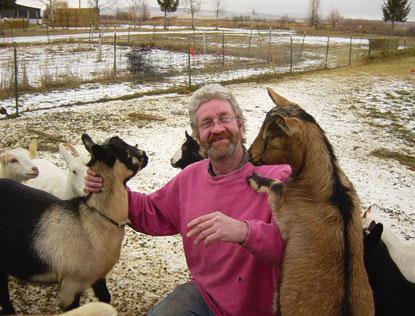Eat Local, America!

From Maine to Florida and Bozeman to Chico, approximately 40 co-ops around the country took part in the 2010 Eat Local, America! campaign to celebrate local food and local producers. Last year marked the third year of this campaign, coordinated by National Cooperative Grocers Association (NCGA).
Of course, celebrating local foods and local farmers has been prime territory for food cooperatives since the very beginning. But with the growing interest in Slow Food, a desire on the part of eaters to "know your farmer," and the coining of the term "locavore," co-ops have been using Eat Local, America! to shine new light on their local products, as well on as their longstanding and deep commitment to supporting local producers, local economies, and seasonal food.
The Eat Local, America! website (www.eatlocalamerica.coop), besides providing a listing of participating co-ops, dates of local events, and farmer/producer profiles, incorporated blog posts from a variety of perspectives: cooks, beekeepers, raw foods enthusiasts, cheesemakers, and even a co-op staff person or two. NCGA offered downloadable templates for a variety of Eat Local-themed materials including posters, banners, suggested menus, shelf-talkers, and a chart of seasonal produce that can be modified for different growing regions. Co-op marketing staff were encouraged to plan in-store events, displays, classes, contests, and film festivals featuring seasonal, local food and producers, and they were provided with tips on how to promote local eating via social media and case studies of Eat Local success stories.
Lisa Smith, brand development manager for Neighborhood Co-op Grocery, Carbondale, Ill., is a veteran of previous Eat Local campaigns, and she developed a comprehensive promotional plan for her 2010 event, which took place in August. Beginning in mid-July, Lisa and the co-op's staff began encouraging customers to sign up for a special Eat Local email list. Those who signed up would receive a special packet of information about the initiative, including a cover letter, a chart listing when particular local foods are in season, and background information about the benefits (and fun) of choosing locally grown food. Each issue of the e-newsletter included profiles of local growers and producers with sidebars highlighting their products, and four to six recipes, with tie-ins to the eatlocalamerica.coop website.
Neighborhood Co-op's event culminated with a local harvest picnic and craft auction. Registered Eat Local participants who attended were eligible to win a case of local wines or a local foods gift basket. She also worked with regular partner and local foods advocate, Chef Bill—also known as Bill Connors, the executive chef for housing operations at Southern Illinois University–Carbondale, to promote eating locally with recipes and in-store demos.
Tallahassee, Fla.'s New Leaf Market was a first-year participant, so Marketing and Project Manager Cristin Burns approached Eat Local, America with the enthusiasm of a newbie. "We decided to promote Eat Local, America! in June based on feedback from our farmers and produce manager, since June offers us the widest variety of produce. We used all of the materials offered by NCGA but modified them significantly. We added our logo, updated the produce calendar because it wasn't accurate for North Florida, and changed some of the menu suggestions to reflect our local produce. We also used the ‘Local Color' signs to identify all local products. Having [local gardener and writer] Jenn Bronson write a blog was maybe the best part of the whole program. Her interviews with farmers and recipe ideas helped make the theoretical a reality for some. This year, I hope to get more press for the month, which should be easier because we already have the marketing materials."
Emily Stimac, Marketing Coordinator at First Alternative Co-op in Corvallis, Ore., reports, "We had a wonderful Eat Local, America! last year. We were able to partner with several other local foods organizations who were doing amazing events and that boosted our event to a new level. We had a drawing for tickets to tour Nancy's Creamery, which was very special for the people who attended. We also toured the farm where we are getting our locally grown wheat and several bean varieties. That tour included a feast of local foods, too!"
When asked for advice on how to replicate First Alternative's results, Stimac said, "The key to our success wasn't doing more ourselves but was linking up with others who had events going on as well and boosting the excitement around those events."
Plans for another season promoting local food and producers are underway, and NCGA will offer continued support to co-ops that wish to build on previous years' successes or launch a new program. For more information on Eat Local, America! 2011, contact Jeanne Lakso at jeanne.lakso@ncga.coop.







